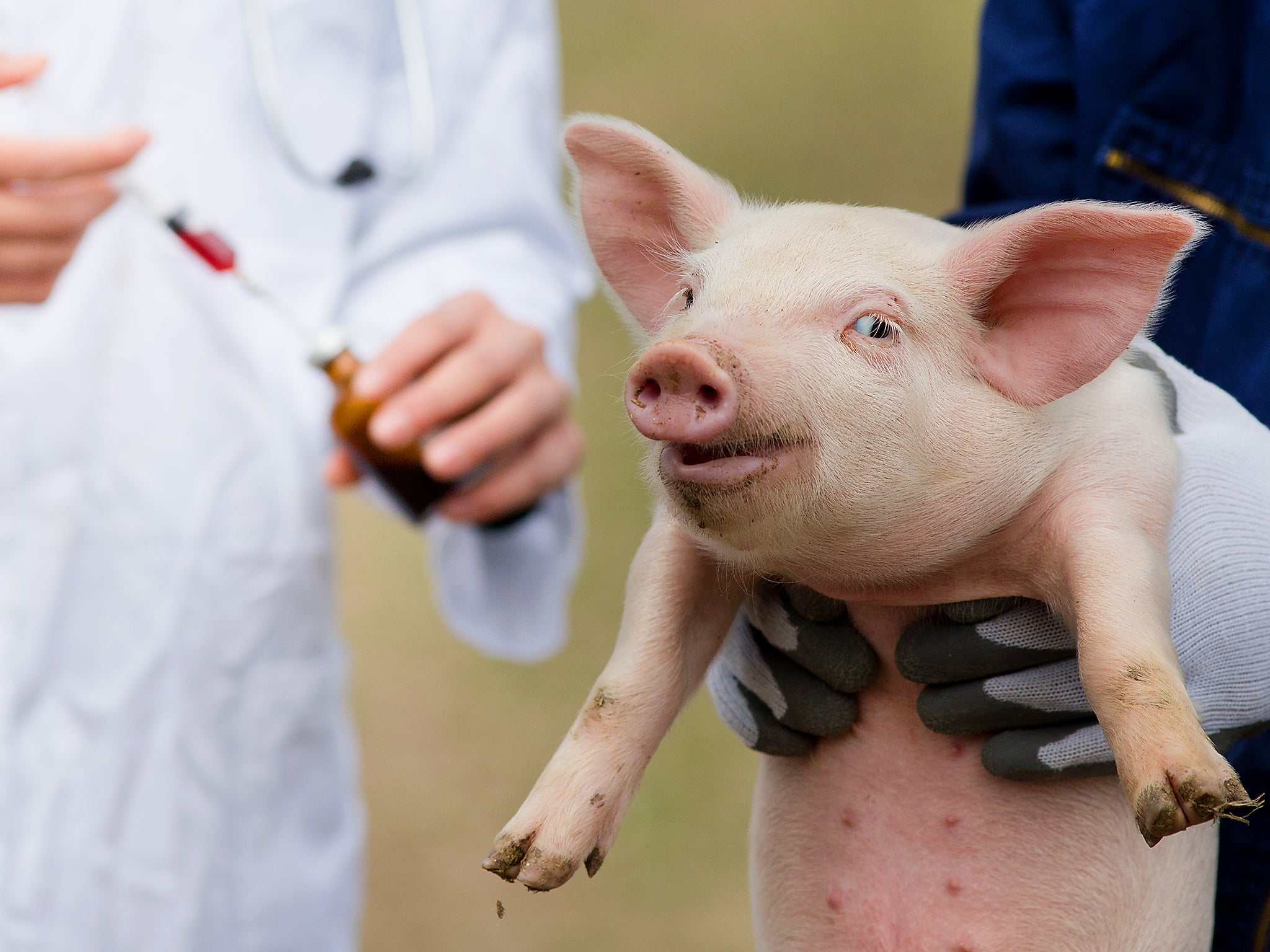Fully-grown pig chimeras are only a few years away – we need to understand where they stand now
The potential of human-animal chimeras leave scientists with the question of ethics

Your support helps us to tell the story
From reproductive rights to climate change to Big Tech, The Independent is on the ground when the story is developing. Whether it's investigating the financials of Elon Musk's pro-Trump PAC or producing our latest documentary, 'The A Word', which shines a light on the American women fighting for reproductive rights, we know how important it is to parse out the facts from the messaging.
At such a critical moment in US history, we need reporters on the ground. Your donation allows us to keep sending journalists to speak to both sides of the story.
The Independent is trusted by Americans across the entire political spectrum. And unlike many other quality news outlets, we choose not to lock Americans out of our reporting and analysis with paywalls. We believe quality journalism should be available to everyone, paid for by those who can afford it.
Your support makes all the difference.If you needed an organ transplant, would you mind if it had been grown in an animal from human stem cells? Or would you do it but deep down find it frighteningly unnatural? This may all sound like science fiction, but scientists recently managed to implant human stem cells into a pig embryo – pushing us a step closer to such a future. There are also other important applications from this type of research, such as the study of developmental processes and diseases of many kinds.
We are, at minimum, several steps and several years away from being able to create fully grown human-animal chimeras. But worries over the ethics of chimera research have been with us since the beginning of the 21st century. Ethicists have begun to map the space of difficult moral questions surrounding this issue.
In a useful recent survey, Robert Streiffer identified several distinct concerns and discussed whether they were worthy of attention. Many readers will share these concerns, although they leave me fairly cold. One is that creating chimeras is wrong because it violates boundaries between species – it is in some morally problematic way unnatural. Another is that the creation of chimeras will threaten social practices that depend on a strong human-animal distinction, such as the farming of animals for food, and so create moral confusion. Many people also believe that chimeric research will threaten human dignity.
One area of concern that I do find salient and important, however, has to do with the moral status of chimeric beings. As Streiffer also noted, if a chimeric animal’s moral status is enhanced then society must be prepared to deal with it. As an extreme example, consider a chimera with human-like cognitive abilities but without the physical ability to speak. Such a chimera could conceivably be raised in a society that hasn’t thought about how to address this and places no weight on its enhanced cognition.
If enhanced cognitive abilities are a basis for enhanced moral status, this might be ethically problematic. But confronting this problem requires a sophisticated understanding of what “moral status” means and of how chimeric research might enhance this in an animal.
Upping status
And it’s not clear that we have a sufficient understanding of this. This is because most accounts of moral status are designed to consider only two things. One is that healthy human beings fully qualify for it – their interests matter morally, and there are strong moral reasons against harming or killing them. The other is that some privileged population – for example babies, foetuses, those with severe cognitive disabilities or non-human animals – is close enough along some relevant dimension to qualify for similar protections.
These things in combination can lead to a lot of confusion. Although each of these marginalised groups present unique concerns, in each case we’re supposed to draw a theoretical connection between them and that of healthy human adults. The idea is usually that these groups demonstrate some capability or property that we find morally significant in our own case, and that in virtue of this the marginalised group deserves moral consideration.

But healthy human adults are complicated creatures, with a range of morally relevant capacities and characteristics. Healthy human adults are sentient, they enjoy sophisticated moral agency, they are self-conscious and they enjoy rich inner lives full of a range of complicated emotions. They also participate in complicated forms of social interaction, friendship and cooperation. If we wish to extend moral status to some population, for example to foetuses, we will probably pick a subset of these capacities to be able to include them. Or try some alternative way to demonstrate that the population meets similar criteria as healthy human adults.
But what we’re left with is a mishmash of accounts of moral status, and of the things that might enhance or diminish it. Moral philosophers have suggested that these range from self-consciousness and sophisticated psychological capacities, to simply the capacity to suffer or to participate in relationships that could fundamentally transform behaviour. Other suggestions include having the genetic basis for moral agency (would human genes in a human/pig chimera count?) or the fact that one might have been or might become a person.
It is unclear how well any of these proposals would relate to the case of chimeras. Our understanding of what kinds of chimeras we may be able to create is still in its infancy. It is unclear whether chimeras will share features with the problem cases that drive much work in ethics on moral status. For example, will growing a human heart or some human neurons in a pig mean that it might have been a person, and is this morally significant?
The current approach to determining moral status is problematic. It is not a great theoretical procedure to develop a new patch each time a theoretical dyke springs a leak.
It may be that what we need to do is to go back to the drawing board with respect to moral status, and to think hard about the kinds of things that underpin our practices and our moral judgements regarding human adults. For difficult cases like the human-animal chimera, ethical thought on moral status may not yet be fit for purpose.
Wellcome Trust Research Fellow in Philosophy, University of Oxford. This article first appeared on The Conversation (theconversation.com)
Join our commenting forum
Join thought-provoking conversations, follow other Independent readers and see their replies
0Comments